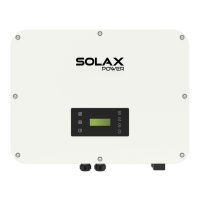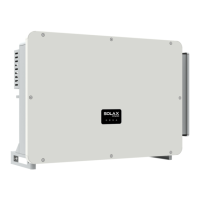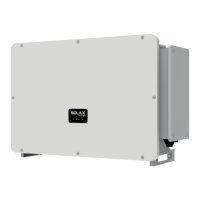18
Product Overview
2.7.6 EPS Mode (Priority: Loads > Battery)
During a power failure, the system will provide uninterrupted power supply to the EPS
loads using the power from PV and the battery. It is important to ensure that the EPS loads
should not exceed the maximum output power of the battery.
Charg in g
Disch arg i n g
EPS Mode
Id eal: The emergency loads still can be
used when grid is o.
7: 00
Ba ttery p o w ers th e lo a d PV p o w ers th e lo a d
23: 00
Disch arg i n g
18 : 00
Lo ad p ower cu rve
ower
Time Line
Ba ttery
statu s
Ba ttery
SO C
PV input power
Ba ttery p o w ers
th e lo ad
PV an d b a ttery
power th e lo ad
Charg e th e battery
with ex cess PV en erg y
PV an d b a ttery
power th e lo ad
Figure 2-14 EPS mode
Table 2-8 Description of EPS mode
Battery SOC Inverter working status
Battery SOC
>Min SOC
(in off-grid
mode)
PV is sufficient
(PV
→
load
→
battery)
• The PV prioritizes supplying power to the load, with any excess energy
being directed towards charging the battery.
PV is insufficient
(PV + battery
→
load)
• The PV prioritizes supplying power to the load. If the energy is not
enough, the battery will discharge power until the battery SOC
reaches Min SOC and then error of BatPowerLow will be reported.
Battery SOC
≤Min SOC
(in off-grid
mode)
The inverter reports BatPowerLow. When there is PV, it will charge
the battery first. After charging to the set Min ESC SOC value, it will be
automatically recovered and enter EPS mode again.
Note:
Min SOC: Minimum SOC of the battery under off-grid conditions. 10% by default, the
settable range: 10%-100%.
Min ESC SOC: The minimum SOC of the battery to enter EPS mode. 30% by default, the
settable range: 15%-100%.

